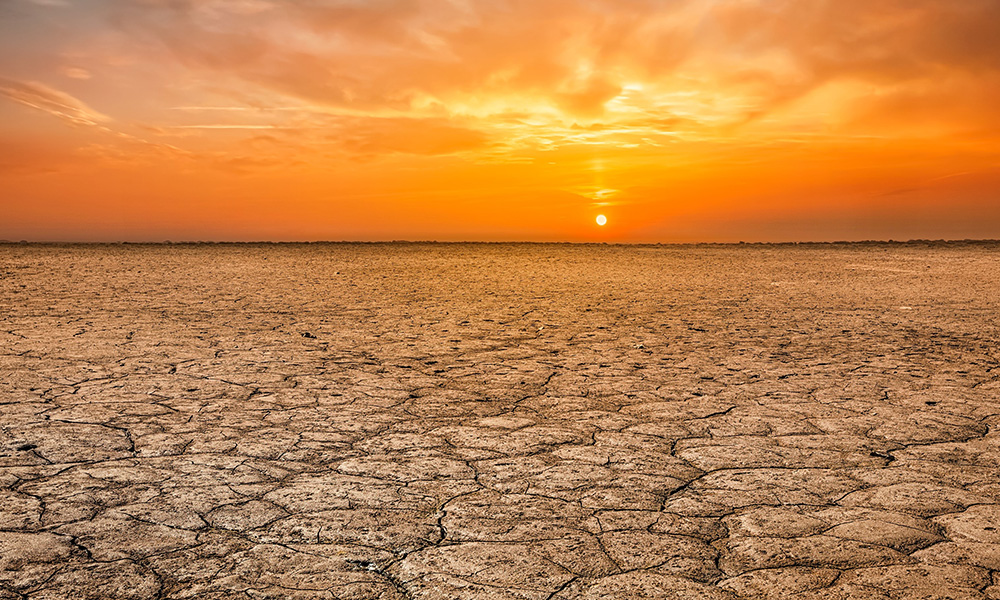WMO: 50:50 chance of global temperature temporarily reaching 1.5C threshold in five years
There is a 93% likelihood of at least one year between 2022-2026 becoming the warmest on record, and dislodging 2016 from the top ranking

On 9 May, the World Meteorological Organisation (WMO) issued a notice that stated there is a 50:50 chance of the annual average global temperature temporarily reaching 1.5-degrees Celsius above the pre-industrial level for at least one of the next five years. The likelihood is increasing with time, the organisation said in its new climate update.
“This study shows – with a high level of scientific skill – that we are getting measurably closer to temporarily reaching the lower target of the Paris Agreement on Climate Change. The 1.5C figure is not some random statistic. It is rather an indicator of the point at which climate impacts will become increasingly harmful for people and indeed the entire planet,” said WMO Secretary-General Prof. Petteri Taalas.
According to the statement from the WMO, there is a 93% likelihood of at least one year between 2022-2026 becoming the warmest on record, dislodging 2016 from the top ranking. The chance of the five-year average for 2022-2026 being higher than the last five years (2017-2021) is also 93%, according to the Global Annual to Decadal Climate Update. The report is produced by the United Kingdom’s Met Office, the WMO lead centre for such predictions.
The annual update is said to harnesses the expertise of internationally acclaimed climate scientists and the best prediction systems from leading climate centres around the world. The report aims to produce actionable information for decision-makers, the statement said.

The statement pointed out that the chance of temporarily exceeding 1.5C has risen steadily since 2015, when it was close to zero. For the years between 2017 and 2021, there was a 10% chance of exceedance. That probability has increased to nearly 50% for the 2022-2026 period, it warned.
“For as long as we continue to emit GHGs, temperatures will continue to rise. And alongside that, our oceans will continue to become warmer and more acidic, sea ice and glaciers will continue to melt, sea level will continue to rise, and our weather will become more extreme. Arctic warming is disproportionately high and what happens in the arctic affects all of us,” added Prof. Taalas.
The Paris Agreement set long-term goals to guide all nations to substantially reduce global greenhouse gas emissions to limit the global temperature increase in this century to 2-degrees Celsius, while pursuing efforts to limit the increase even further to 1.5C. The Intergovernmental Panel on Climate Change said that climate-related risks for natural and human systems are higher for global warming of 1.5C than at present, but lower than at 2C, the report noted.
The findings of the annual update also noted:
- The annual mean global near-surface temperature for each year between 2022 and 2026 is predicted to be between 1.1C and 1.7C higher than preindustrial levels (the average over the years 1850-1900)
- The chance of global near-surface temperature exceeding 1.5C above preindustrial levels at least one year between 2022 and 2026 is about as likely as not (48%). There is only a small chance (10%) of the five-year mean exceeding this threshold
- The chance of at least one year between 2022 and 2026 exceeding the warmest year on record, 2016, is 93%. The chance of the five-year mean for 2022-2026 being higher than the last five years (2017-2021) is also 93%
- The arctic temperature anomaly, compared to the 1991-2020 average, is predicted to be more than three times as large as the global mean anomaly when averaged over the next five northern hemisphere extended winters
- There is no signal for the El Niño Southern Oscillation for December-February 2022/23, but the Southern Oscillation index is predicted to be positive in 2022
- Predicted precipitation patterns for 2022 compared to the 1991-2020 average suggest an increased chance of drier conditions over southwestern Europe and southwestern North America, and wetter conditions in northern Europe, the Sahel, north-east Brazil, and Australia
- Predicted precipitation patterns for the May to September 2022-2026 average, compared to the 1991-2020 average, suggest an increased chance of wetter conditions in the Sahel, northern Europe, Alaska and northern Siberia, and drier conditions over the Amazon
- Predicted precipitation patterns for the November to March 2022/23-2026/27 average, compared to the 1991-2020 average, suggest increased precipitation in the tropics and reduced precipitation in the subtropics, consistent with the patterns expected from climate warming






















